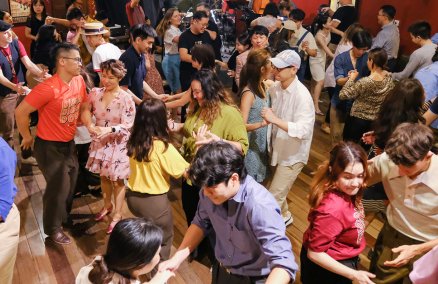I believe in fairy tales. My parents dedicated two walls of our home in Sukhumvit for me to paint. On them I drew angels flying from place to place, granting wishes to people. Never did I think I would later become that angel myself.
As I grew up I became jaded and, at one point, found myself sitting on the side of the road wondering what had gone wrong. Instead of waiting for an angel to come and save me, I picked up my pen and relentlessly started sketching the nearby reeds in my notebook.
I have adored little houses since I was a kid; treehouses, gingerbread houses, you name it. I never owned any real toys. I had to build my own if I wanted something to play with. I remember building myself a small village from cardboard boxes, using all of my childish ability.
My obsession with houses reached the point of madness. I developed the habit of trying to figure out the construction plan of every interesting, complex-looing house I came across.
I first used my architecture skills to make a difference in 1995. While doing my master’s in the UK on housing design for low-income people in Thailand, I flew back to Songkhla to do research, and actually got to put my architectural skills to good use.
Be open. When you are a complete stranger who appears out of nowhere to work with poor people, you have to listen and learn. I always tell myself that.
I am not a fairy godmother, although my work makes me look that way. I want people to understand that I’m a normal human being. Just because you’re poor doesn’t mean I’ll be all Angelina Jolie and build you a library for free.
Most of the money comes from third parties. Things can easily digress when dealing with people who live in Bangkok’s slums. A powerful third party can control both sides: people and architects.
I want people from these communities to hire me for projects. The money would come from every household in that community: B20-30 per person, depending on the size of each house, would be enough to keep me rolling.
Slums are like a deep-rooted cancer that we’ve only been curing on the surface, rather than addressing at its core.
This city needs its poor. They’re part of the big picture. Without them who will make our somtam, who will clean our sidewalks? As long as we overlook these people then development plans are only goofy fairytales.
At one of my workshops last year, I asked the attendants to follow the life of someone they see on the street; interview them, take pictures of them. What we found was eye-opening. The people we often look down on like noodle sellers—even ones whose food tastes like shit—can earn B20,000 a month. One truck driver selling sugar cane made no less than B80,000. A municipal official only makes B15,000 a month.
I feel slighted every time I get called a community architect. It implies I have a lack of design sense or that I got an F while studying and that’s the only reason I work helping poor people.
I’m not a female architect. I’m an architect. Good God, do we have to draw a line between the sexes? There are already so many lines in this profession: landscape architect, interior architect, construction architect and now community architect. It’s absurd. Architects, no matter what major they come from, should be able to handle jobs on any level.














